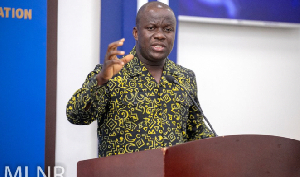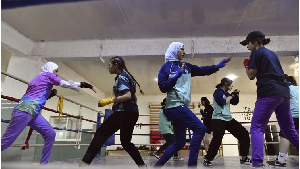Opinions of Tuesday, 20 August 2024
Columnist: Dr. Aniemena-George Chidi
The urgent need for GFA to help reduce high rate of Anterior Cruciate Ligament injuries among footballers in Ghana
The high rate of anterior cruciate ligament (ACL) injuries among professional footballers in Ghana is a pressing issue that demands immediate attention from the Ghana Football Association (GFA).
ACL injuries are not only physically debilitating but can also have severe long-term consequences on a player's career and overall well-being. Here are some steps that the GFA can take to help reduce the occurrence of these injuries:
1.Implement Preventive Training Programs
• Education on ACL Injury Prevention: Coaches, trainers, and players should be educated on the importance of injury prevention exercises. Programs such as FIFA 11+ have been shown to reduce ACL injuries significantly when implemented consistently.
• Strength and Conditioning: Emphasizing strength training, especially for the muscles surrounding the knee, can help stabilize the joint and reduce the risk of ACL tears. This includes exercises that improve core strength, balance, and proprioception.
1. Improve Playing Surfaces
• Quality of Pitches: Poor-quality pitches increase the likelihood of ACL injuries due to uneven surfaces that can cause awkward landings and sudden changes in direction. The GFA should invest in improving the quality of football pitches across the country.
• Regular Maintenance: Ensuring that existing pitches are well-maintained can also help reduce the risk of injury. This includes proper grass cutting, levelling, and ensuring the ground is neither too hard nor too soft.
1. Incorporate Regular Screening and Monitoring
• Physical Assessments: Regular screening for players to assess their risk factors for ACL injuries, such as muscle imbalances or previous injuries, can help identify those who need targeted intervention.
• Monitoring Workload: Overtraining and fatigue are significant risk factors for ACL injuries. The GFA should ensure that players' workloads are monitored and managed, allowing adequate recovery time between matches and training sessions.
1. Enhance Medical Support
• Access to Qualified Sports Medicine Professionals: The GFA should ensure that all professional teams have access to qualified sports medicine professionals who can provide immediate care and rehabilitation for injuries.
• Rehabilitation Programs: For those who do suffer ACL injuries, the GFA should facilitate access to comprehensive rehabilitation programs that ensure a full recovery and reduce the risk of re-injury.
1. Promote Research and Data Collection
• Injury Surveillance: Establishing an injury surveillance system to collect data on ACL injuries among footballers in Ghana can help identify trends and risk factors that can inform future prevention strategies.
• Collaborative Research: The GFA can partner with universities and research institutions to study ACL injuries, looking into biomechanical, environmental, and genetic factors that contribute to the high incidence rate.
1. Awareness Campaigns
• Raising Awareness: The GFA should run awareness campaigns targeting clubs, players, and fans, emphasizing the importance of injury prevention and the long-term consequences of ACL injuries if not properly managed.
By taking these proactive steps, the Ghana Football Association can significantly reduce the incidence of ACL injuries among professional footballers, ensuring that players remain healthy and capable of performing at their best throughout their careers.













